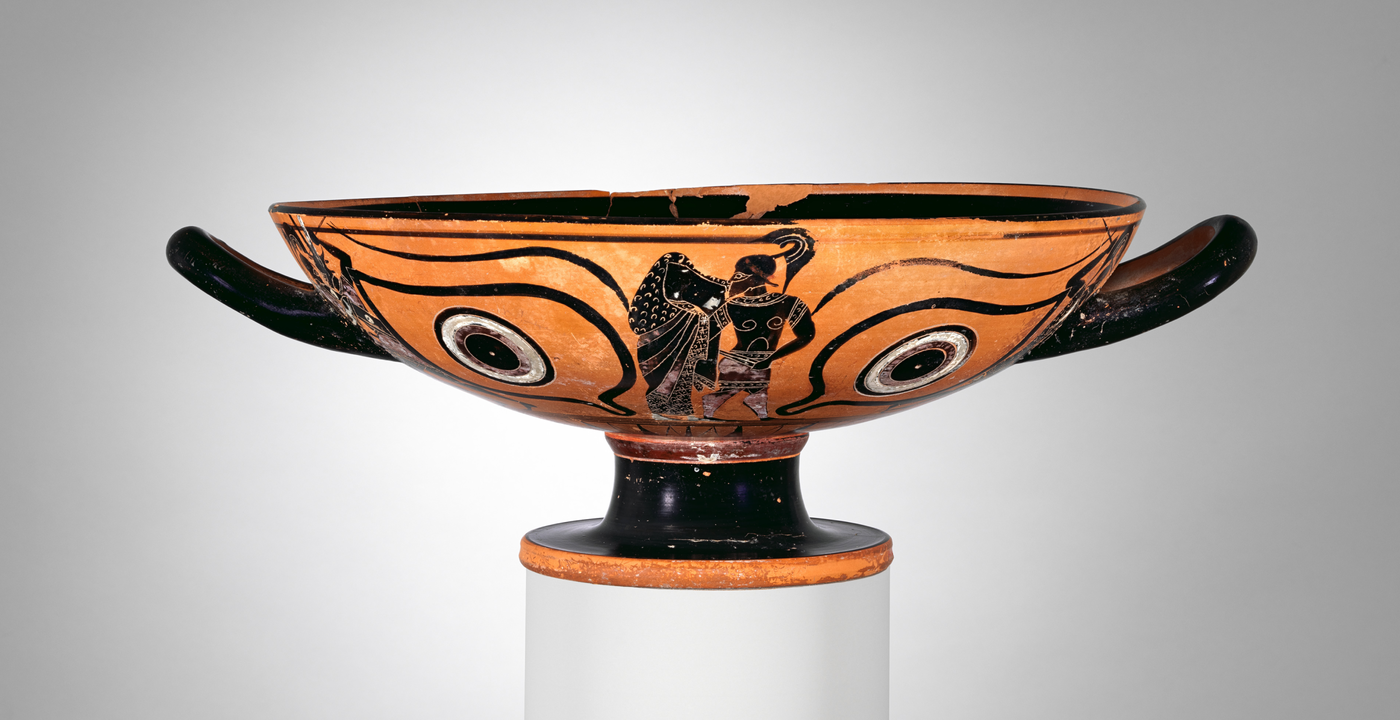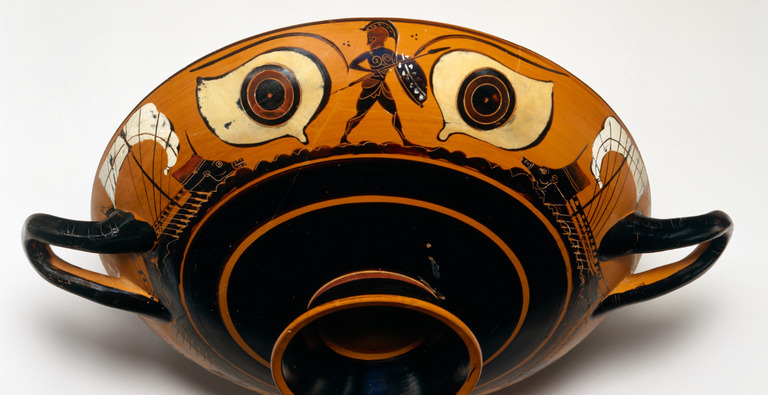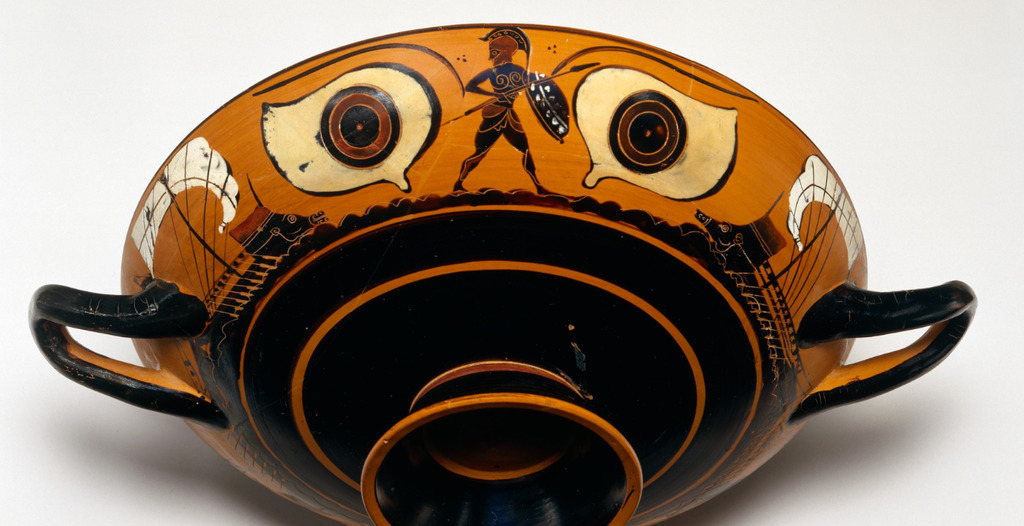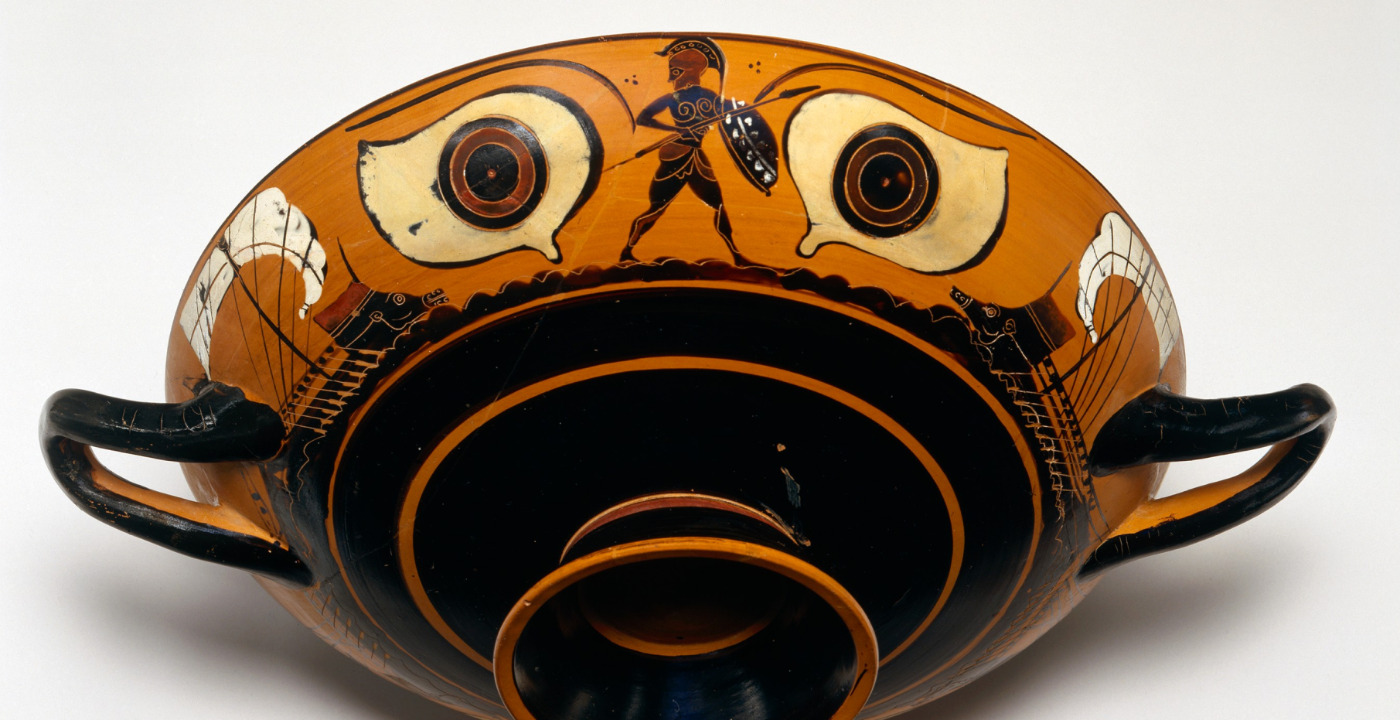In the sixth century BCE, a woman named Melōsa won a wool carding competition in Taras, Greece. In commemoration of her victory, she was awarded an Athenian kylix, a type of wine cup, with a personalized inscription engraved in the base that reads: “I am Melōsa’s victory prize; she defeated the girls in carding.”
Though little is known about Melōsa, she is often described as an hetaera, or a woman who drinks and parties with men, a term that applied to both long-term unmarried partners and prostitutes alike. But by labeling Melōsa as an hetaera, the focus is placed on her social status and relationship to men rather than the potential knowledge to be gleaned from the short text about her life and achievements.
Melōsa’s label as an hetaera has fed into some modern readings of her inscription, which intuit ‘carding’ as a double entendre for an erotic act, something tantamount to a striptease. Because her prize was a wine cup, some assume she must have performed for men at their symposia, or drinking parties, as a prostitute. Yet, the idea that she might be an hetaera at all is groundless.
This conclusion speaks to a desire to define Melōsa first and foremost through her relationship to men, as if a woman could not exist except as an adjunct to a male figure.
Scholars have argued, on slim and inconclusive evidence, that ‘Melōsa’ is a name an hetaera–not a citizen woman–might hold in Athens, but Melōsa was not an Athenian. She lived in Taras, a Laconian colony in the southeast of Italy. The name Melōsa is also attested in the Aeolic compound Astymeloisa as perfectly acceptable for a Laconian.

Ownership of a kylix does not define a woman as an hetaera; other wine cups have been found with the names of women owners written on them, such as those of Eucharis and Philtō. The argument is built on a false foundation that imagines women could or would only consume alcohol in the context of a male symposium, which is not true of the Ancient Greek world.
Focus on defining Melōsa’s status by her relationship to men has detracted from what her inscription reveals about her and the world in which she lived.
One can imagine the pride she may have felt in the valuable imported Attic prize. The inscription also only gives her first name, not her patronym, which is her father’s name used as a surname. She does not define herself by any man in her life–instead she defines herself as a prize-winner, the focus on her victory over other girls.
Melōsa’s carding competition would have taken place at a religious festival devoted to a god or goddess’s garment preparation, a process fulfilled by women and girls. Great ceremony was accorded for the weaving of a new peplos, a robe, for a deity. Considerable prestige was earned by the women and girls who participated. In a later period, girls who worked the wool for Athena’s robe in Athens were honoured in public decrees and each of their names were recorded in stone. Taras was known in antiquity for its wool industry. Wool manufacturing there likely held particular local significance.
It is often stated that Greek women were not educated, except by their mothers, and that few could read and write. The inscription recording Melōsa’s achievement argues against this prejudice about female literacy. The text is composed in Melōsa’s dialect and orthography, and there is no reason to assume she did not write it herself. The text is written in verse, suggesting the composer’s evident literary ability. If the composer was not Melōsa, then, at the very least, she surely was able to read and appreciate the inscription; without this assumption there would have been little incentive to label her prize.
The poetic text implies a level of literacy Melōsa—and presumably other young women at Taras—had achieved. If she had been taught by her mother then the text would demonstrate that the mother too was literate. The Greeks used to store kylikes by hanging them on the wall, so the record of Melōsa’s achievement on the base of her kylix would have been on display to everyone who visited her home, including her friends. Melōsa, through the text on her prize, announces her winning status within her network of peers and competitors.
Beyond potential proof of Melōsa’s own literacy, the competition itself is evidence for a network of women working as organizers, administrators, and competition judges in Taras.
Little information exists concerning Melōsa’s competition, but at other comparable festivals, such as Hera’s festival in Olympia, women played an integral role in the organizing process. Therefore, it is reasonable to intuit that behind Melōsa’s carding competition lay a social structure that empowered other women–both by awarding prizes to young female competitors, such as Melōsa, and by appointing fellow women to prestigious public roles in the community.
Previous studies of Melosa’s text have focused on what the inscription reveals about her relationship to men–but this is a faulty focus. The true significance of Melosa’s victory kylix is the evidence it provides for a complex, woman-involved city-state, and the necessity for scholars to recognize the lives of women holistically, rather than the ways their lives relate to men. Melosa’s victory and kylix ultimately reveal the possibilities for unknown pathways of education and knowledge engagement that extend far beyond what male scholars and historians have wanted to acknowledge.

Further Reading
Ian Plant, ‘Melōsa and her Prize: The Victory of a Woman in Ancient Greece’
Gender & History, online July 2022, pp. 1–19. https://doi.org/10.1111/1468-0424.12639
Dr Ian Plant, author of Women Writers of Ancient Greece and Rome: An Anthology (London: Equinox, 2004), is a New Historian who has provided the schema for women from Ancient Greece: Melōsa, Lysimache and Telesilla. Dr Plant’s anthology identifies and brings together, with his own new translations, the extant fragments of the works of female writers from the Greco-Roman world. It includes works attributed to women that cover a wide range of genres, including poetry, history, philosophy, musical theory, grammar, literary criticism, astronomy, travel, medicine, sex, mathematics, drama, prophecy, and alchemy. The anthology demonstrates that, while only about one hundred female authors can be identified among the over four thousand attested Greek and Latin authors, the work attributed to women reveals an engagement with knowledge and knowledge creation that went much deeper than the (male) scholars of the time and later historians have previously acknowledged.


